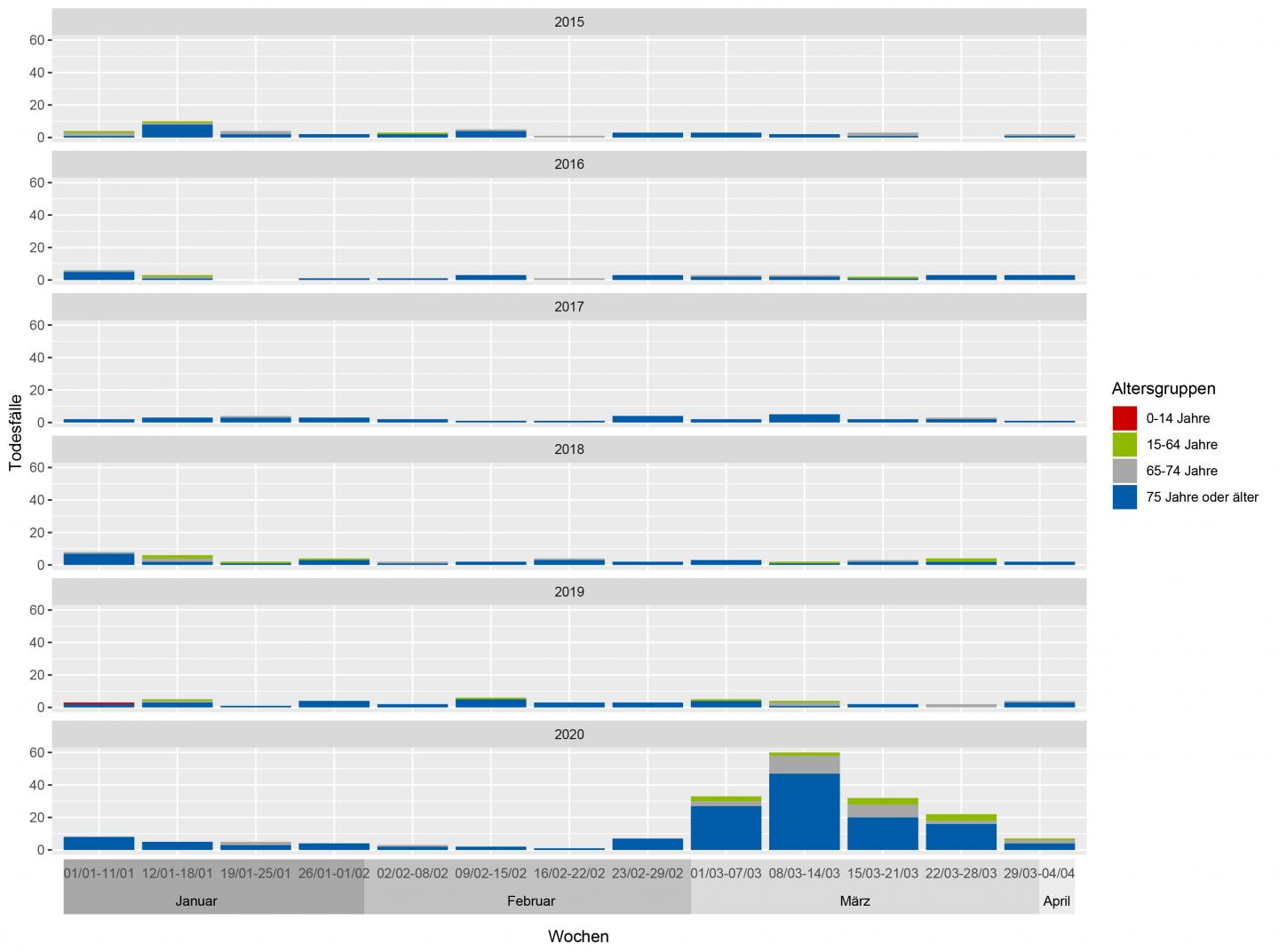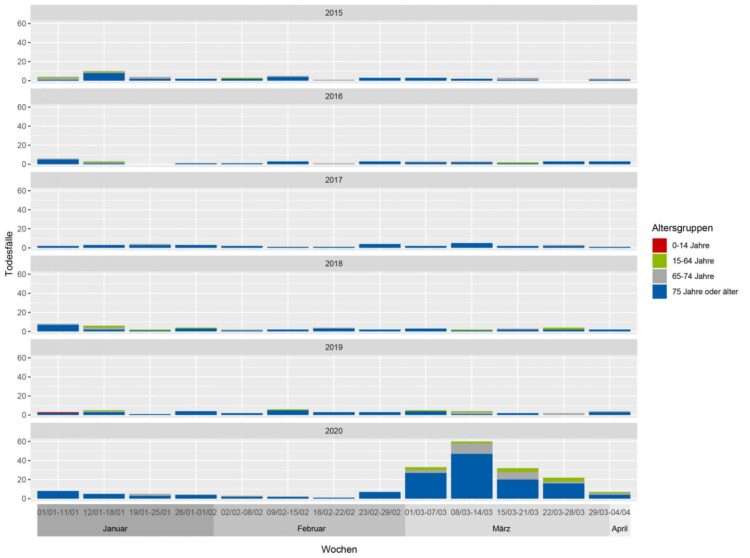
Credit: Image: Piccininni & Gutwasser / Charité
According to a study by Charité – Universitätsmedizin Berlin, the northern Italian city of Nembro recorded more deaths during March 2020 than between January and December 2019. However, only approximately half of all deaths recorded this spring were classified as confirmed COVID-19 deaths. The study shows that the health impacts of the COVID-19 pandemic may go far beyond official COVID-19 death counts. It also shows the important role of all-cause mortality in quantifying the full impact of the pandemic. The study’s findings have been published in The BMJ*.
During the current pandemic, the northern Italian region of Lombardy has been one of the most severely affected areas in Europe. Despite high death counts officially attributed to COVID-19 during the worst part of the pandemic, doubts were soon raised over the accuracy of these data. Official figures did not appear to reflect actual, observable pressures on the health care system. This was also the case in Nembro, a small town in the Bergamo province of Lombardy, which has a population of 11,500. In order to quantify the true impact of the pandemic on the local health care system, a team of researchers led by Tobias Kurth, MD, ScD, Director of Charité’s Institute of Public Health (IPH), studied overall mortality figures, looking at all deaths regardless of their cause. Working alongside colleagues from the Centro Medico Santagostino in Milan, the researchers found the following: During the height of the pandemic in the spring of 2020, the number of all-cause deaths was approximately double that of confirmed COVID-19-related deaths.
In order to accurately quantify mortality rate regardless of cause of death – known as all-cause mortality – the researchers used data for the period between January 2012 and mid-April 2020. They obtained data from several sources: the Italian National Institute of Statistics (ISTAT), Nembro’s registration office, and the Lombardy region COVID-19 dashboard. “Nembro is a small town with a very stable population and very little immigration and emigration over time,” explains Prof. Kurth. He adds: “Given its size and the availability of quality data sources, this town provided the ideal conditions for a robust, descriptive epidemiological study to quantify the impact of the current COVID-19 pandemic as well as its impact on the health of this local community.”
According to the researchers’ analyses, in recent years the town typically recorded all-cause death counts just over 100 per year. In 2018 and 2019, for instance, the town recorded 128 and 121 deaths, respectively. This contrasts sharply with the 194 deaths seen during the three-and-a-half-month period between 1 January 2020 and 11 April 2020; of these, 151 occurred in March 2020 alone. This corresponds to a monthly all-cause mortality of 154 deaths per 1,000 person years for March 2020, nearly eleven times the rate recorded for the same month of the previous year (14 deaths per 1,000 person years). The largest increase in mortality recorded during the pandemic was seen among people aged 65 and over, with men disproportionately affected. 14 deaths involved people younger than 65.
“In the light of Nembro’s otherwise extremely stable all-cause mortality figures, the massive increase in mortality seen during March 2020 can only be interpreted as a consequence of the coronavirus pandemic”, says the study’s first author, Marco Piccininni, who is a researcher at the IPH. Out of a total of 166 deaths recorded during the pandemic (late February to early April 2020), only 85 had tested positive and were subsequently recorded as deaths from COVID-19. “This represents an enormous discrepancy and shows that the pandemic’s impact on the health of the population was significantly more pronounced than the official COVID-19 death count would suggest,” explains Piccininni. The study’s authors believe there are two main reasons for this discrepancy. Firstly, it is likely that not all infected people were identified as such. This is probably attributable to a shortage of materials needed for testing and the fact that not all suspected cases were tested. Secondly, this could be due to people with non-COVID-related conditions having impaired access to health care, either because health system capacities had been exhausted by COVID-19 cases or because of individuals’ reluctance to visit the hospital for fear of infection.
“If we are to accurately quantify the health impact of the pandemic, we must not rely on confirmed COVID-19 deaths as the sole metric,” emphasizes Prof. Kurth. “To better adapt containment measures to the local situation, consideration should also be given to current data on all-cause mortality from within the relevant region. Unfortunately, it is not always possible to access up-to-date all-cause mortality data. I am pleased that Germany has recently started to make preliminary figures available.”
###
*Piccininni M, Rohmann JL et al., Use of all cause mortality to quantify the consequences of covid-19 in Nembro, Lombardy: descriptive study. BMJ 2020;369:m1835. doi: 10.1136/bmj.m1835
The pandemic in Nembro
Nembro reported its first coronavirus cases towards the end of February 2020. This was soon followed by the introduction of the town’s first social distancing measures. On 8 March, Nembro became part of one of Italy’s ‘red zones’ – strict quarantine areas which people were neither permitted to enter nor leave. Residents were only permitted to leave their homes for essential reasons, such as shopping for food or essential types of work. By 11 April, the number of confirmed cases had increased to 218. By 16 April 2020, 85 of these had died. Monthly all-cause mortality decreased during the month of April, which is likely a consequence of the strict community isolation measures.
Media Contact
Dr. Tobias Kurth
[email protected]
Original Source
https:/
Related Journal Article
http://dx.





